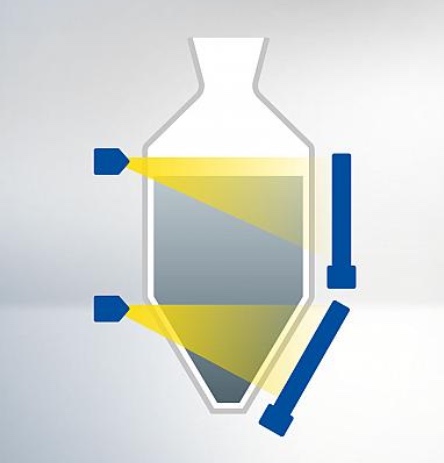03-06-2025
Refinery performance: How to control hydrocarbon loss
Reducing Hydrocarbon Loss in Refineries: A Data-Driven Approach. Hydrocarbon loss costs refineries millions of dollars every year. It happens when systems, processes, and behaviors in the refinery aren’t optimized. Industry best practices aim for losses below 0.25%, and under 0.5% is an achievable goal for most. But if your refinery isn’t hitting these numbers, or you’re unsure where you stand, there’s good news: Hydrocarbon Loss Control Programs can help.
What is a Hydrocarbon Loss Control Program?
A Hydrocarbon Loss Control Program is a set of measures designed to reduce losses systematically. At the heart of these programs is mass balance. Unlike volume, mass doesn’t change due to temperature, pressure, or chemical reactions. Mass balance helps identify where gains and losses happen in the system.
The Role of Mass Balance
A solid mass balance program tracks every refinery input and output, flagging known losses and exposing hidden ones. At Trindent, we’ve shared the main causes of hydrocarbon loss before. Our team uses a structured, proven approach to control these losses and restore balance.
Reducing Losses with Accurate Data
Accurate data is the foundation for reducing mass balance losses. At refineries, measurement errors can come from many sources. Here’s how we help:
- Meter Troubleshooting: First and foremost, we ensure the meter you’re using is appropriate for the specific measurement, considering the process and environmental factors. Next, we verify that the meters are proven at the correct frequency and under suitable conditions, so the readings are accurate and reliable. Our team relies on meter proving checklists and control charts to confirm that your meters deliver trustworthy data.
- Tank Gauging: Different storage methods - tanks, railcars, marine vessels have their own measurement challenges. Tanks, for example, can have shifted bottoms or stratification. Marine vessels face dynamic ocean conditions. We use our expertise and standard checklists to identify and fix these issues.
- Measuring Sediment and Water (S&W): It’s crucial to account for sediment and water properly. Many refineries miss best practices here. For instance, grab samples should be taken from the top down to avoid contamination. Or, using expired demulsifiers can hinder separation of water and crude. We help refineries avoid these mistakes using standard checklists and measurement analysis tools.
A Sustainable, Data-Driven Approach
At Trindent, our approach is always data-driven. We tie our results directly to financial and operational KPIs, making improvements tangible and trackable. Plus, we focus on sustainability, training your teams to maintain these improvements long after we’re gone.
Without capital investment, we create actionable ways to sustainably increase refinery margins by 2-3%. Contact us for a complimentary assessment, to help solve your complex business issues. We are here to Make It Happen™.
Sponsor:
News Category:
-
Refinery performance: How to control hydrocarbon loss
Reducing Hydrocarbon Loss in Refineries: A Data-Driven Approach. Hydrocarbon loss costs refineries millions of dollars every year. It happens when systems, processes, ...
03-06-2025
-
Turning losses into gains: Smart controls that strengthen your bottom line
The Oil & Gas industry has always been defined by one constant - unpredictability. Market volatility continues to challenge even the most resilient organizations. ...
27-05-2025
-
Using mass balance as a refinery KPI: Why accuracy matters
The use of mass balance as a measure of refinery loss control performance has been debated for years. While mass (or weight) is generally a better indicator of performance ...
15-05-2025
-
Gasoline blending: Are you aiming at the right quality targets?
At Trindent Consulting, we've consistently seen that refineries often give away twice as much quality in gasoline blending as necessary. The root cause? In many cases, ...
06-05-2025
-
Crude prices are increasing: Why hydrocarbon loss control deserves attention
As crude oil prices continue to decline, a notable number of refineries, particularly those operating with thinner margins, are choosing to scale back or fully suspend ...
29-04-2025
-
Truck rack process optimization: Unlocking efficiency without capital investment
In refinery operations, process effectiveness is not solely a matter of procedures. It hinges on a critical balance between three pillars: the process itself, the system ...
22-04-2025
-
Boosting refinery margins through blend optimisation and loss control
In the current fast-paced and cost-sensitive refinery environment, enhancing margins is no longer just a competitive advantage, it’s essential for survival. This exclusive ...
09-04-2025
-
Trindent Consulting is proud to share that we have been awarded the prestigious 2019 Supplier Recognition Award by Marathon Petroleum Corporation, in the category of ...
08-04-2025
-
Driving results: A client’s perspective on blending practice transformation
Driving $40M+ in Annualized Savings Through Gasoline Blending Optimization. A leading North American refining corporation partnered with Trindent Consulting to optimize ...
01-04-2025
-
Are process inefficiencies costing you more than you realize? How six sigma solves the puzzle
Six Sigma, What’s Needed to Succeed. Six Sigma, the popular methodology for process improvement, is a statistical concept that identifies the variation inherent in ...
18-03-2025

















